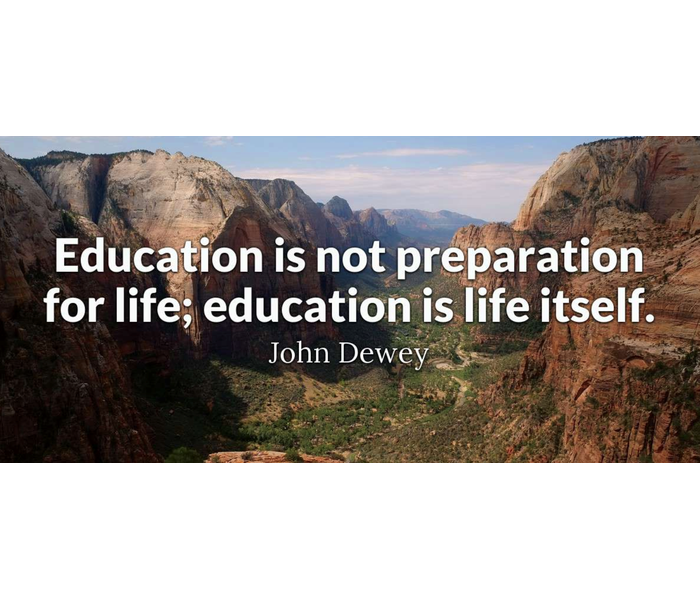Students as Decision-Makers
April 7, 2019

John Dewey, credited as the father of modern progressive education, said, “Education is not preparation for life; education is life itself.” If one embraces Dewey’s concept for education, as I do, then one necessarily agrees that education happens not only at school; it happens everywhere.
So, as we begin this new academic year, I pose a challenge for us as a community to work together to prioritize and build the school-home partnership for the benefit of student learning everywhere. One way to do this is to connect what teachers try to do at school with what parents try to do at home. I say “try” because we know that we may have the best intentions for implementing practices for learning, but it may take time and iterations to work effectively. In other words, we can always get better – at school and at home.
To elaborate on the school-home partnership for student learning, let’s focus on the idea of teaching students to be confident decision-makers.
At school, places where students can engage in systemic decision-making, as outlined by Adam Fletcher, student engagement specialist for SoundOut, include in classrooms, with administration and through culture.
CLASSROOMS: Students participate in classroom decisions, they are taught critical and consensus skills and are encouraged to participate in decisions affecting themselves, their peers and their communities.
Examples: In Ms. Dalakas’ Middle School ESL class, students initiated a toy drive this month wherein they have been given full responsibility for all decisions regarding the project from start to finish, including which organizations to work with, the rules of the toy collection, the communication about it and the how of delivery. In Dr. Manney’s Grade 10 English class each year, students read short stories that pose moral dilemmas that ask them to weigh in on real-life decisions, engage in intense discussions about right and wrong and consider what they would do in difficult situations.
ADMINISTRATION: Students participate as full members of committees and training and awareness activities wherein school wide decisions are made.
Examples: This year, students in High School are part of a Sex Ed committee who will design a curriculum and teach sex ed content to their peers. Also, student participation on important committees such as our MSA Accreditation Planning Team is invaluable for us. This committee spearheaded the articulation of the school’s core values and oversees other activity related to Pinewood’s accreditation status.
CULTURE: Students are authorized to mediate decisions, spaces are created for student decision-making and student forums are facilitated for students.
Examples: This year, we have initiated a series of town hall meetings in the high school to provide a forum for student voice on topics of relevance and importance to them. We also continually strive to find the right approach to student council, both in the Elementary and Secondary Schools, so that students have opportunities to create and run social and service projects that are important to them.
At home, parents can support their children’s development as sound decision-makers, too. In a recent article in The Washington Post’s On Parenting section, author Kate Rope outlines 6 things parents can do to raise kids to be confident decision makers. Below is a summary.
Empathize, but don’t solve the issue
Try to listen without jumping in. If we can press the mute button and pause, that’s where the growth comes in.
Help your child listen to herself
Use words like “seems like” and “sounds like” to help a child identify what he/she is feeling rather than telling them what to feel.
Provide structure
Give the tools for decision-making: set time frames, show them how to do a pros and cons list, tell them how you would make a decision if it was your decision to make. And, let them know that you are confident that they can make the decision.
Practice decision-making
Look for small moments for your children to make decisions, like asking them to decide what to have for dinner, and make suggestions, not decisions, for them.
Encourage reflection
When your son or daughter makes a good decision, acknowledge it. Also acknowledge when they didn’t follow their inner compass.
Discuss learning to live with regret
Let your children know that bad decisions are part of life and help them find ways to work through the discomfort of them. Deconstruct bad decisions and help them think through what might be helpful the next time.
As we work together to prioritize our school-home community, let’s align our efforts by orienting our approaches towards those that provide Pinewood students with validating opportunities for building knowledge and skills needed to make informed decisions everywhere.


